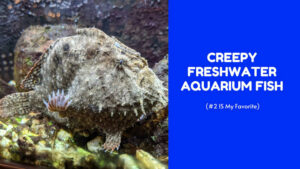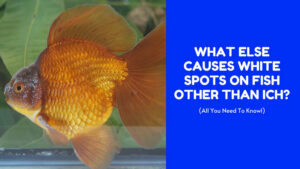Interestingly, the term clean-up crew has been used to refer to various groups of critters in reef aquariums since the late 1980s. In the most literal sense, clean-up crews are animals hired to help maintain water quality by consuming uneaten food, pest algae, detritus, and parasites.
Nowadays, clean-up crews are also used in freshwater aquariums to help with the same issues. A typical freshwater clean-up crew may include snails, shrimp, and other small fish.
While a laborious clean-up crew can be a useful addition to any aquarium, it’s important to remember that they are not replacements for good husbandry practices. In other words, don’t expect your clean-up crew to do all the work for you!
They are also called “algae eaters” or “scavengers” and do an excellent job of consuming unwanted algae, uneaten food, old leaves, and even pest snails. There are many different types of clean-up crew members available, but for 5 to 10-gallon tanks, not too many for you to choose from.
That’s why we put together this list of the best 5 to 10-gallon aquarium clean-up crews to help you get started.
#1 Amano Shrimp (Caridina multidentata)

We’re starting off our list of the best algae eater, the Amano shrimp. Named after Takashi Amano, the inventor of the Nature Aquarium style of fishkeeping, these little guys are one of the most popular freshwater shrimp out there.
Amano shrimp are incredible algae eaters, as far as shrimp go, and will consume hair algae, string algae, and even the dreaded black beard algae (BBA). But, they won’t eat algae as much if given access to prepared shrimp food. So, if you want your Amano shrimp to focus more on eating algae, it’s best to have to refrain from feeding them food instead.
In addition to their algae-eating abilities, Amano shrimp are also excellent scavengers. They will help to clean up any uneaten food or detritus inside the tiniest cracks that other clean-up crew members can’t reach.
Amano shrimp are also relatively easy to care for and can be kept in a wide range of water conditions. They do best in heavily planted tanks with plenty of hiding places. Make sure to provide enough minerals and calcium in the water for them to molt properly.
Not only are they hardy, but they are also cheap, which is great for beginner shrimp keepers. Amano shrimp usually cost between $1 to $3 each and can be found at most local fish stores.
#2 Nerite Snails (Neritina natalensis)
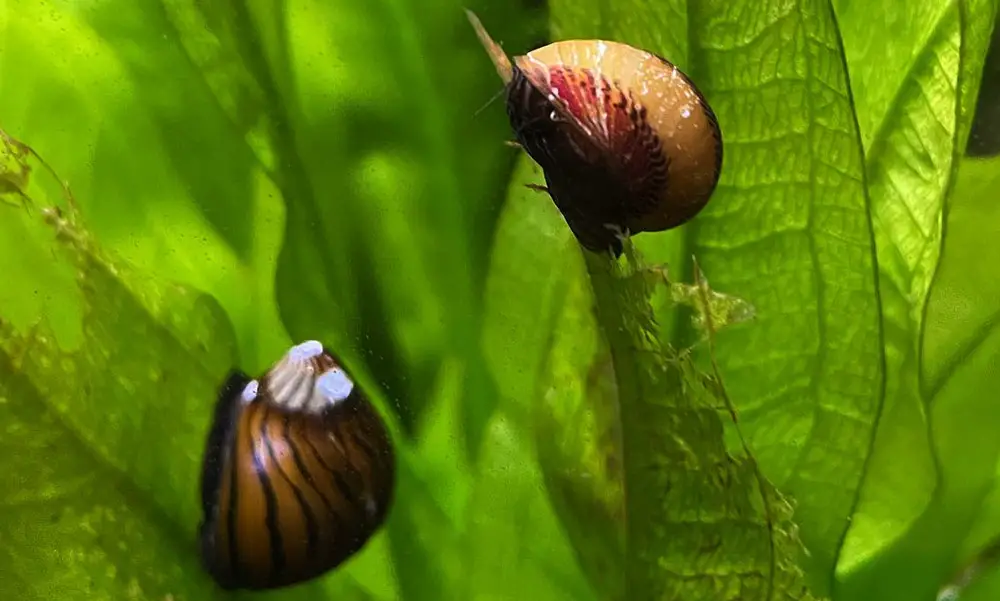
Nerite snails are one of my favorite critters out there simply because of their ability to eat algae without worrying about the tendency to reproduce like a plague.
They are also proficient scavengers and help keep your tank clean by eating leftover food, rotting leaves, and even dead fish, breaking down fish water and other organic material.
Depending on the species, these snails come in a variety of colors and patterns, which can add a splash of color to your aquarium. They are also relatively peaceful creatures that get along well with most tank mates.
Many species in the aquarium trade range from 0.5 to 1.5 inches (1.3-3.8 cm). Given its small size, the nerite snail is an ideal candidate for 5 to 10-gallon aquariums within a wide range of tropical temperatures.
Nerite snails require brackish water to reproduce but can live their entire life cycle in freshwater. They do best in tanks with higher pH above 7.0.
These snails like to move up to the water surface to eat the soft white mineral deposits, which often form by evaporation and, therefore, may escape from the aquarium if you don’t have a tight-fitting lid.
#3 Dwarf Oto (Otocinclus macrospilus)
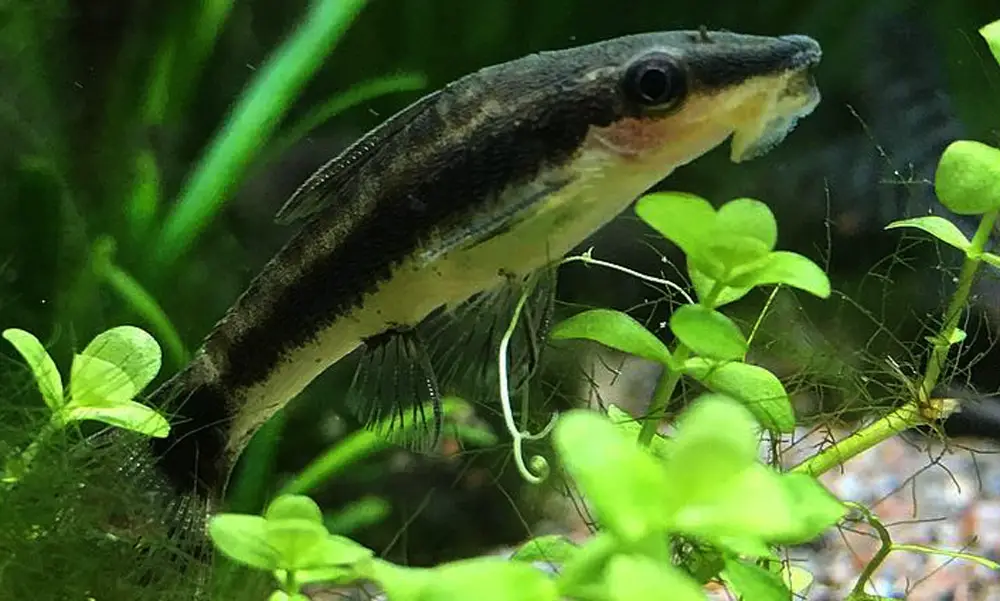
Also known as common otocinclus, otos, Otto Cats, or dwarf suckermouth catfish, dwarf otos are beloved for their voracious appetite for algae and docile temperament.
These little catfish only grow to be around 1.4 inches (3.5 cm) in length. This size makes them a great addition to nano tanks.
Since these fish have no mean bones in their body, they are not a threat to any tank mates, no matter how many. They will use their sucker mouths to suck in algae on the aquarium glass, live plants, decorations, and equipment.
Dwarf otos are widely considered one of the best algae eaters among aquarists. When there aren’t enough algae in the tank, you can supplement their diet with algae wafers or canned green beans.
Otocinclus prefer to live in groups and do best when there are at least 5-6 fish in the tank. They like to hide a lot, so you should provide plenty of plants for them to explore.
It is difficult to breed otos in the home aquarium, and they are most often collected from the wild. Tank-raised specimens are typically much more adaptable but can be quite expensive.
#4 Assassin Snail (Clea helena)
Nobody likes pest snail problems. Those tiny snails seem to reproduce overnight and are just a general nuisance. So what do you do when confronted with an infestation? Meet the assassin snail, scientifically known as Clea helena.
Yes, that’s right. These snails kill and eat other snails. They are the perfect addition to any aquarium plagued by unwanted snail species such as ramshorns or bladders.
Assassin snails typically grow to 0.7–1.25 in (18–32 mm) and are even smaller when kept in an aquarium. Due to their small size, these critters can be a good addition to a planted nano tank to control the snail population.
There is no need to worry about other aquarium inhabitants being on the menu. These snail-killing chemicals are carnivorous and will only consume other snails. They are not at all interested in fish, shrimp, or any other type of animal.
Using a softy sandy substrate in the aquarium is recommended because assassin snails will often burrow. As with all snails, they are very sensitive to copper. Make sure to monitor the copper levels in the water on a regular basis.
#5 Pygmy Cory (Corydoras pygmaeus)
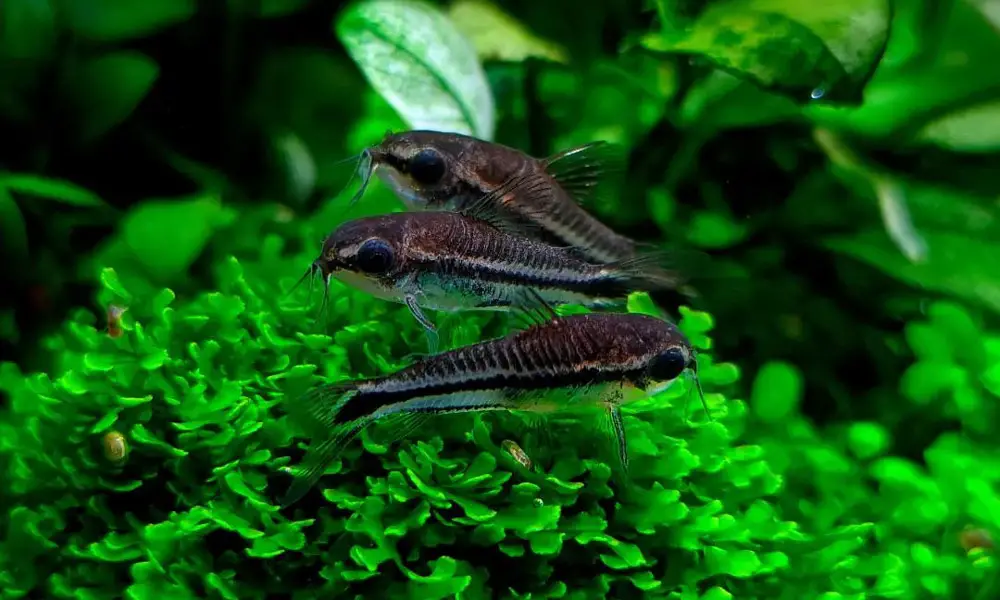
There’s no doubt you’ve heard corydoras catfish recommended as the perfect addition to a community tank. They are peaceful, low-maintenance, and have a charm all of their own.
While corydoras are small fish, ranging from 1 to 4.7 inches (2.5 to 12 cm), pygmy corys are on the smaller end of the spectrum. As their name suggests, these fish stay quite small, only growing to be about 1.2 inches (3 cm) in length.
Pygmy corydoras are often sold as classic scavengers that will help clean up the aquarium by using their barbels to look for worms, crustaceans, and other small bits of food buried in the substrate.
While they do enjoy foraging for uneaten morsels that reach the bottom, they won’t do much to help keep the substrate as “clean” as other “true” clean-up crews like kuhli loaches.
Contrary to what you might expect, you have to use soft sand as a substrate for these little fish. They are known to damage their barbels when kept on a course substrate, which can lead to infection and even death.
Like otos, pygmy corys are schooling fish and do best when kept in groups of 5 or more. They are peaceful tank mates that can be kept with a wide variety of other fish, shrimp, and snails.
Additional Considerations
- Don’t expect to clean up crews to clean your tank for you. They are a helpful addition, but they shouldn’t be your only method of tank maintenance. Regular water changes and vacuuming the substrate are still necessary to keep the aquarium clean and the inhabitants healthy.
- Consider the personality and temperament of the centerpiece fish when choosing a clean up crew. Some fish, like the bettas, are known to be aggressive, and your shrimps and other small fish might become an easy meal.
- Be careful with medications. Many medications used to treat fish are extremely toxic to invertebrates.
- Make sure you thoroughly research each species before adding it to your aquarium. Some snails are known to reproduce in freshwater and can quickly take over a tank.
Final Words
No matter what type of aquarium you have, there’s a clean up crew to fit your needs. These small animals play an important role in keeping the tank clean and the water quality high. As an added bonus, many of them are fun to watch and make great tank mates.
Do you have a favorite clean up crew member for a 5 to 10 gallons tank? Let us know in the comments below!


